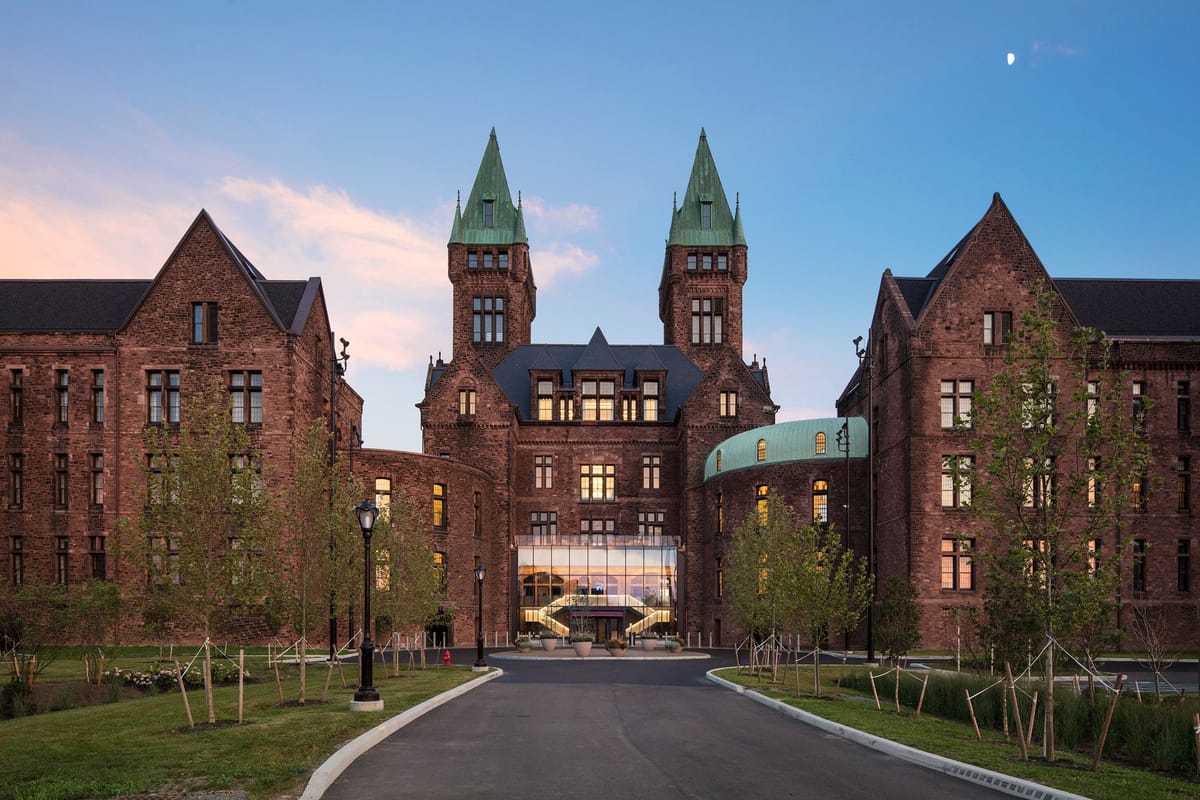Succession or Finale?
Long-term planning gives architects an opportunity to rethink ownership models

Hi everyone,
This is the first issue sent via Ghost, our new platform. There is one thing to note: if you want to browse the archives on the website or comment on an issue, you’ll have to “log in” once. Enter the email address you used to sign up fort this list and you’ll receive a log in–link email. Once you do that, so long as you use the same browser, you shouldn’t have to log in again.
Thanks for bearing with us! We feel Ghost aligns with the kinds of companies and software we write about when we cover technology. Today, though, a story about the business of architecture.
Love all ways,
Brian
Five years ago, writer and critic Eva Hagberg was having trouble getting architects on the phone. She had been thinking about the sudden death of Zaha Hadid, in 2016, and her own health issues, and wanted to speak with architecture-firm founders about succession planning. The vast majority of responses to her inquiries: “It’s not the right time.”
Hagberg rightly asked: when is the right time? Today, an increasing number of firms, at varying scales and in both North America and Europe, are grappling with this question. Here in Toronto, for example, KPMB announced a newly expanded leadership group in August 2021 by emphasizing evolution and collaboration.
Deborah Berke, the New York–based architect and educator, was one of two founders to speak to Hagberg on the record. Then working through a restructuring, she said: “It’s much more about inclusivity, generosity, acknowledgment of the kind of atmosphere I want to have in my office.” The results of that process were announced a few months later, when the firm elevated eight principals to partner, then broadened in 2023 when the company rebranded as TenBerke.

It makes sense that Berke, as both an educator and an architect committed transforming existing buildings, would address issues around longevity and operational sustainability. But such succession planning is always complex; controversy surrounding Hadid’s estate and practice dragged on for years. And the larger the firm, the harder it can be to make changes. As a service business subject to changes in the broader economy, operational conservatism can be masked as a preservation instinct. That makes these transitions unique opportunities to rethink more than just how to honor a founder’s design legacy. Equally important are questions about ownership, decision-making, and management. Those conversations can be made thorny by each generation’s differing expectations. But, taken seriously, leadership transitions are unique opportunities to think structurally, and to join the increasing number of firms restructuring to be employee-owned or cooperatives.
Jed Brubaker, an academic who conducts death studies research, said to Hagberg: “It’s not a fear of dying. I see people as uncertain about how to make choices.” If it’s time to make one difficult decision, why not make several? Like the Grand Shrine of Ise, in Japan, which is rebuilt every twenty years, the longest-lasting firms may be those that are open to the most dramatic change.
Some related articles and resources:
- Interview with two principals at BNIM, the ~80-person US firm which transitioned to an employee-ownership model
- From Will Ing, “Employee ownership: who really wins?”
- From The Architecture Lobby, a working group on networking cooperatives
- Carla Bonilla Huaroc on democratizing architecture practices through restructuring
- Nat Barker, “Architecture and design studios ‘need to be constantly thinking about the future’”
🔗 Good Links
- 🇬🇧🚴🏻♀️ “A quiet revolution in London’s financial district will rip out roadways and install wider sidewalks, new bike lanes, and more public squares and open spaces friendly to pedestrians.”
- ✨📜 Paul Ford: “If the current narrative holds—if AI is victorious—well, liberal arts types will be ascendant.”
- 🐺🌇 “One of the exciting frontiers for open-source urbanism is widening the definition of the public to include non-human subjects.”
- 🌏🔬 Hugh McFall’s list of 25 emerging climate-tech startups to watch in 2024





